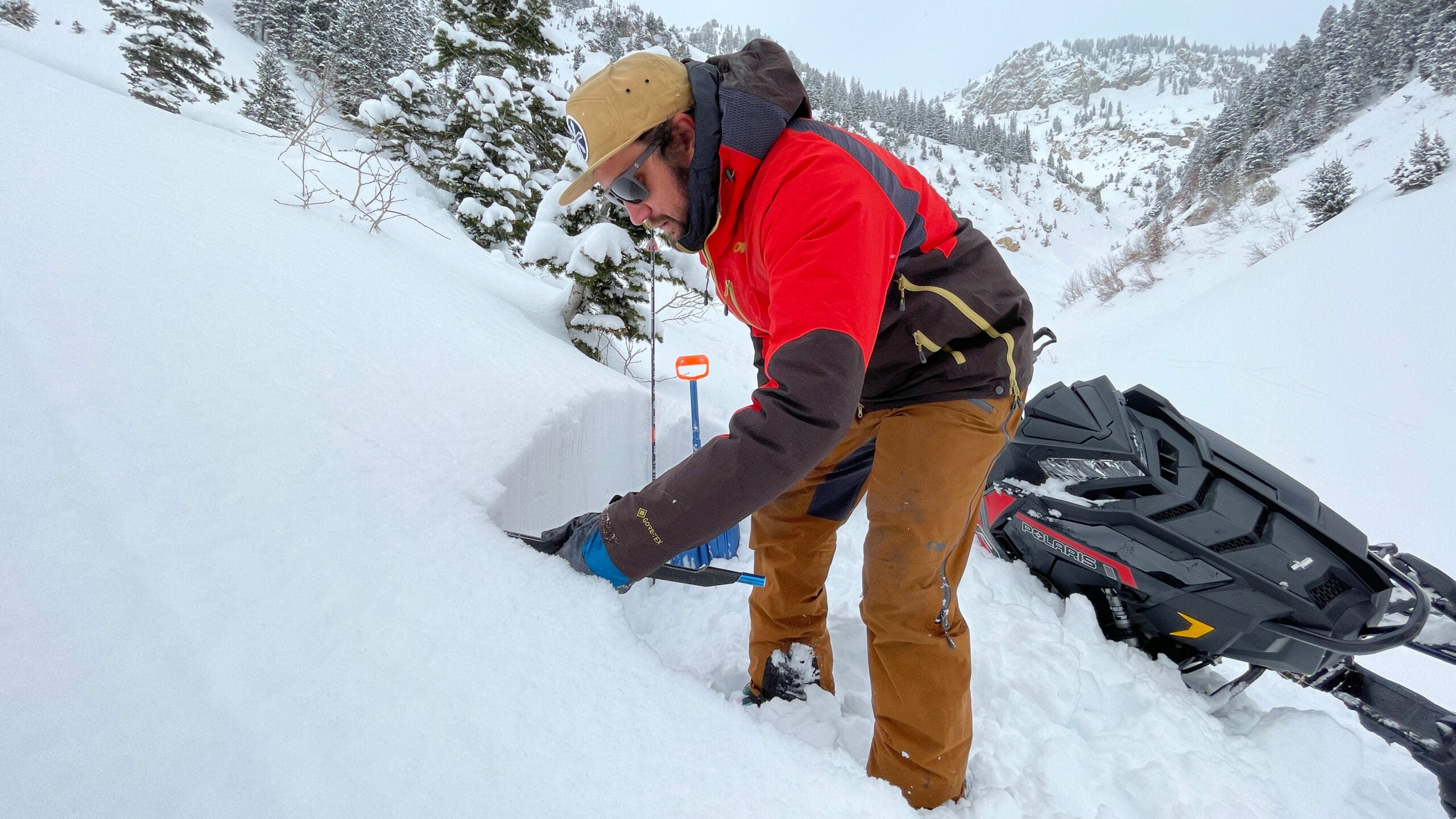When snow flurries fall on Seeley Lake, Montana, snowmobilers zip into the backcountry for another day of powdery bliss. The town, located 50 miles northeast of Missoula, boasts 400 miles of groomed trails through dense woods and over enchanting meadows, right to the foot of steep, snow-filled chutes.
“Five minutes from the trailhead and you’re on really technical stuff,” Karl Zurmuehlen, 50, a local backcountry guide, told �����ԹϺ���. “That’s what brings a lot of riders to Seeley Lake.”
But this winter, Seeley Lake’s picturesque trails and snow-covered slopes have become ground zero for a crisis gripping America’s small-but-dedicated community of avalanche forecasters.
In December, the made the tough decision to no longer send avalanche experts to Seeley Lake to test the snowpack. The Missoula-based center, which oversees a huge swath of backcountry in the state’s center, also announced that its avalanche forecasts for Seeley Lake would be published only sporadically this winter. The decision comes just four years after a in the area.
“I guess avalanche safety is going to become a word-of-mouth thing at Seeley Lake now,” said Zurmuehlen, who’s business, Kra-Z’s, also rents snowmobiles to visitors.
The avalanche center’s decision to pull back from Seeley Lake is a result of the recent budget and staffing predicament within the National Forest Service. In September, the Forest Service publicly announced for the remainder of 2024 and into 2025. The agency, which manages 193 million acres of American grasslands and forests, also operates or helps fund 14 regional avalanche centers, including the West Central Montana center.
Abandoning one popular backcountry area may seem like a local issue. But forecasters who work within the Forest Service’s avalanche program told �����ԹϺ��� that a larger problem may be looming on the horizon. With the Forest Service’s future left to the whims of national politics, they worry that the agency’s avalanche program may suffer deeper cuts in 2026 and beyond. If that happens, the Forest Service’s avalanche centers will have to abandon more recreation areas like Seeley Lake.
This plight comes as more Americans than ever are venturing into avalanche terrain for outdoor recreation. Participation in backcountry skiing and snowboarding soared during the pandemic. The , a trade group for the skiing industry, reported approximately 4.9 million skiers and snowboarders recreated in the backcountry during the 2023-24 winter. That’s up from just 2 million during the 2017-18 winter.
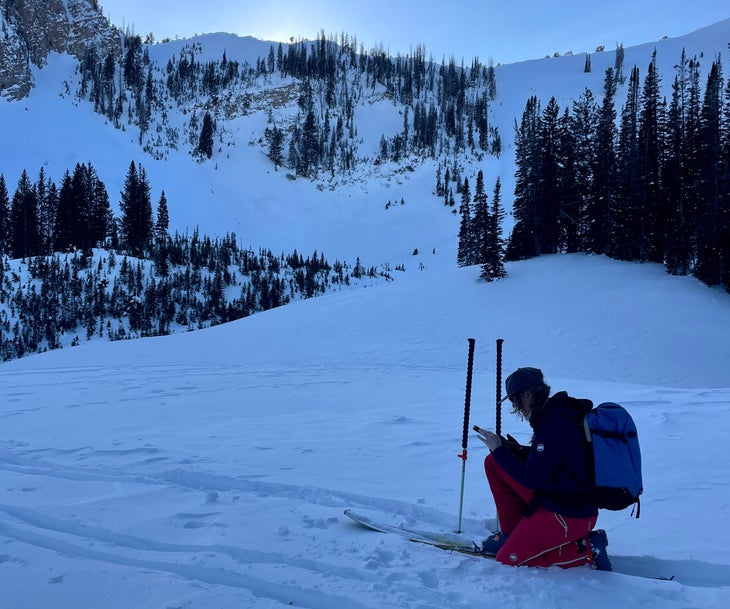
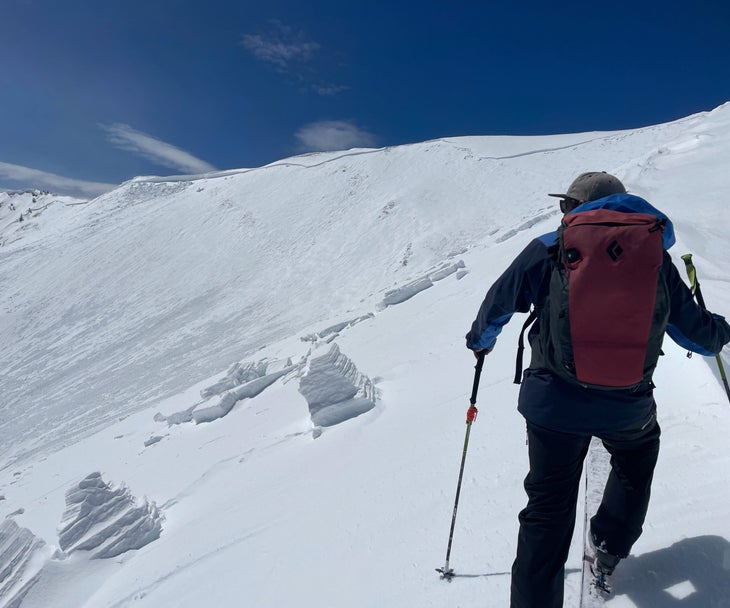
A sizable portion of these skiers and snowboarders rely on the published by Forest Service centers to assess danger. Within the tight-knit circle of avalanche forecasters, the Forest Service budget cut has sparked a debate over funding and managing avalanche safety in the United States.
“Right now is an inflection point,” said Patrick Black, the executive director of the West Central Montana Avalanche Center (WCMAC). “With so many uncertainties for this winter and winters to come, now is the time to revisit the current model for funding avalanche safety.”
How a Federal Shortfall Impacts Avalanche Forecasting
The bad news broke just a few weeks before the first snowfall blanketed the Rockies. In June, the U.S. House of Representatives from the $8.9 billion the agency requested for the 2024-25 fiscal year. On September 16, which was then released to the public, explaining how the massive agency, which , would address the shortfall.
For 2024 and 2025, the Forest Service would no longer hire part-time seasonal workers, except for wildland firefighting crews, he said. Losing these employees, called “1039” staff in Forest Service parlance, would require the agency to halt a wide range of seasonal duties, from trail maintenance to campsite cleanup.
“We are not going to do everything that is expected of us with fewer people,” Moore said during the conference.
The news sounded alarm bells within the Forest Service’s 14 avalanche centers, which are based in California, Utah, Wyoming, Alaska, Montana, Idaho, Washington, and New Hampshire. Seasonal employees perform critical work during the winter at some of these centers. They venture into backcountry areas early each morning to observe snowfall and dig pits into the snowpack, looking for signs of avalanche danger. They work alongside year-round forecasters to process this information and combine it with weather data. And some of them also write the daily avalanche reports that appear online.
“Avalanche forecasts aren’t produced by machines. They’re done by people with high levels of expertise.”—Scott Schell, Northwest Avalanche Center
“There was panic,” said Scott Schell, executive director of the Northwest Avalanche Center’s non-profit organization. The NWAC, which is one of the 14 Forest Service centers, forecasts for Washington State and northern Oregon. “Without our seasonal workers we aren’t much of an avalanche center,” Schell added.
Collectively, the NFS avalanche program employs approximately 70 workers; 55 are permanent positions or a designation called “seasonal permanent.” The remaining 15 are seasonal positions. Of the 11 employees at the Northwest Avalanche Center, eight are seasonal workers, Schell said. All eight positions were jeopardized by the hiring freeze.
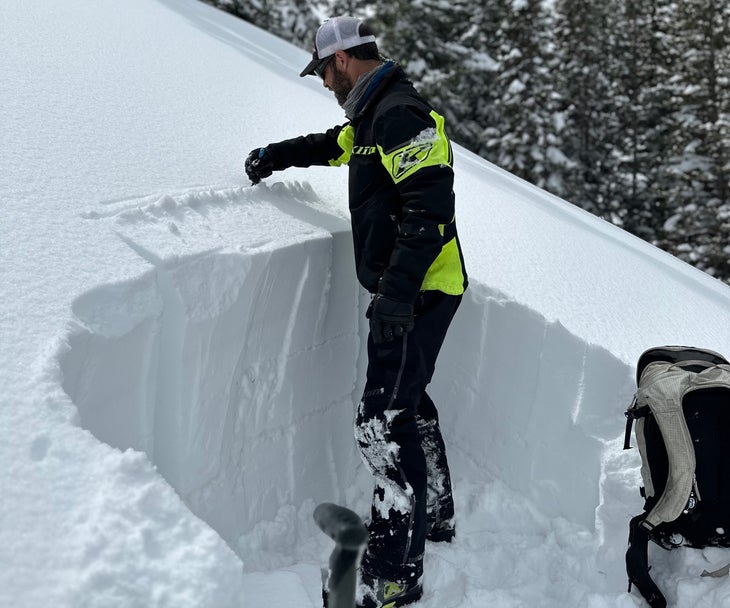
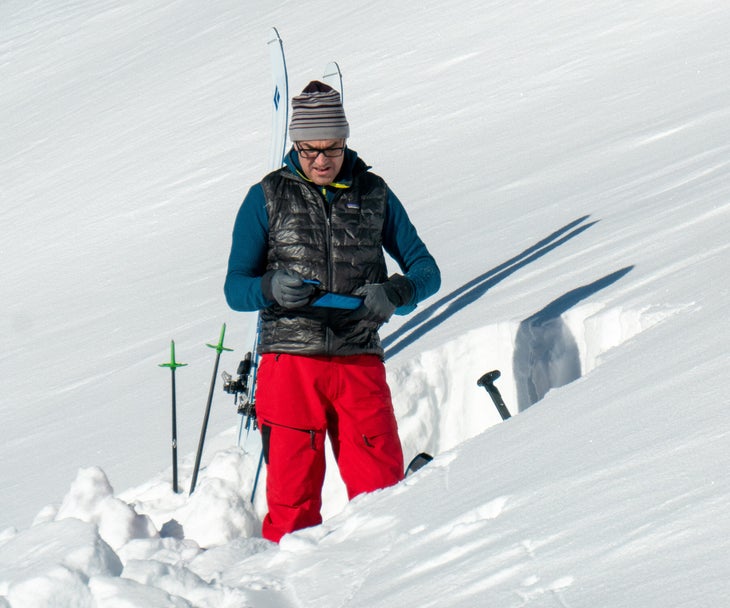
“Avalanche forecasts aren’t produced by machines,” Schell said. “They’re done by people with high levels of expertise.”
The Forest Service also funds and operates the National Avalanche Center, a collection of snow science experts and avalanche forecasters who train staff and coordinate resources between the 14 regional centers. Simon Trautman, the director of the National Avalanche Center, told �����ԹϺ��� that his office began working on solutions to the staffing crisis shortly after the call. “People do these jobs because they love what they do,” he said. “And because they believe the work ultimately saves lives.”
But in the days after the announcement, a solution seemed nearly impossible to attain. The Forest Service initially told avalanche centers they could not sidestep the staff cut by simply paying the seasonal salaries from their own coffers. The 14 NFS avalanche centers are funded in part by the agency; each center also raises a portion of its operational budget through non-profit donations, sponsorship sales, or from state agencies.
The ratio of private funding to NFS dollars differs for each center. Trautman said funding from sponsorship sales and non-profit organizations, called “friends groups,” account for slightly more than half of the total budget for the 14 centers. The Forest Service, he said, contributes $2.5 million annually to fund the centers.
“We’re essentially a rounding error,” Schell said. “When you consider the impact we have.”
But the Forest Service still manages the centers, which means they are subjected to all agency-wide mandates, including staff cuts. That decision did not sit well within the avalanche program.
“Injuries and fatalities will likely be the result of this cost-saving measure,” Dwayne Meadows, the executive director of the Bridger-Teton Avalanche Center, wrote in a letter in October.
Meadows, Schell, and other avalanche center managers pushed back on the cut. Throughout September and into October, they contacted regional forest managers and asked, then begged, to be exempted from the hiring freeze.
“We are a crucial part of the economy,” Meadows told �����ԹϺ���. “Outdoor recreation is part of what keeps our community going in the winter.”
Pressure mounted from outside the agency as well. In Wyoming, Senators John Barrasso and Cynthia Lummis, both Republicans, asked for the Bridger-Teton center to receive an exemption for its seasonal staff. On October 4, a letter signed by 42 different companies and nonprofits—from the American Mountain Guides Association, to Montana’s Bridger Bowl Ski Area, to Colorado Mountain Club—begged Moore to allow the avalanche centers to remain fully-staffed.
“Forest Service Avalanche Centers provide crucial tools for public safety and it is critical that these centers operate at full capacity this, and every, winter,” the letter said.
The pressure worked. As the first snowfalls hit the high country, regional managers granted exemptions for the avalanche centers, or allowed them to fund seasonal staff through non-profit funds. The Intermountain Region, which oversees Utah, Idaho, and Wyoming, granted exemptions to Bridger-Teton for its two seasonal positions; the Pacific Northwest region, which manages Oregon and Washington State, approved Schell’s request for all eight.
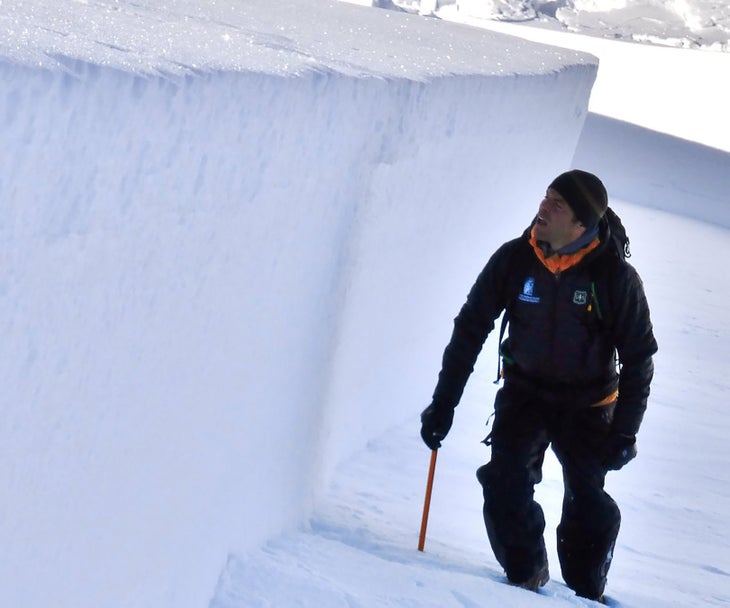
At Montana’s Flathead Avalanche Center, which oversees the area surrounding Glacier National Park, the Northern Region manager approved one 1039 employee and allowed two seasonal-permanent employees to have their contracts extended. Other centers received exemptions, and by November, all 15 seasonal employees were saved.
The success “significantly helped morale,” Trautman said. “Because of leadership support, we are still in the avalanche forecasting business,” he added.
Patrick Black, the executive director of the West Central Montana Avalanche Center, watched as other centers received exemptions throughout September and October. But as the snow began to fall on the mountains outside Missoula, Black learned that his center, which does not employ 1039 workers, would receive a debilitating cut.
“There was a brief moment when it seemed like all of us were going to be safeguarded,” Black told �����ԹϺ���. “We weren’t included. It was painful to hear.”
How Budget Cuts Hurt Avalanche Centers and the Backcountry Users that Rely on Them
If any avalanche group was destined to fall through the cracks, it was the West Central Montana Avalanche Center. Of the 14 centers affiliated with the Forest Service, it is the only one that operates as a true non-profit.
None of the avalanche center’s three full-time staff work for the Forest Service—instead, they report to a board of directors and are paid by a non-profit called The West Central Montana Avalanche Foundation. The center raises $80,000 of its $120,000 annual budget through grants, donations, and sponsorships; the remaining $40,000 comes in via an annual Forest Service payment.
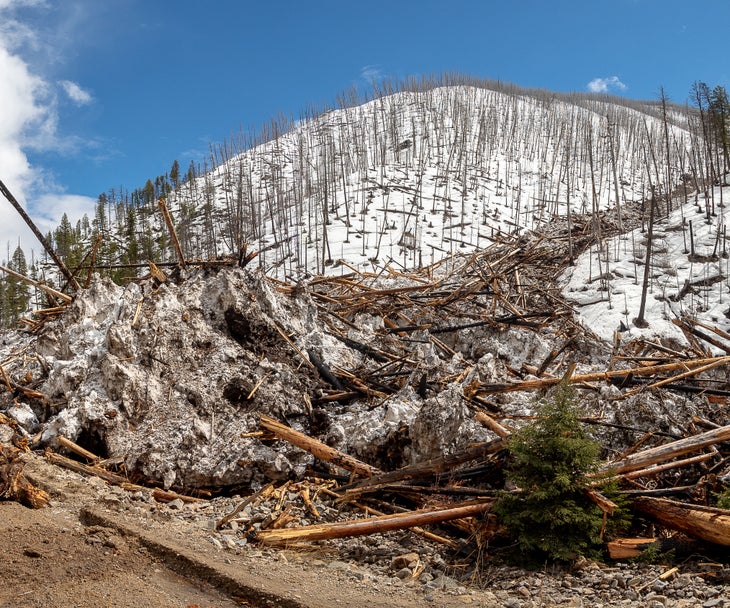
“I’m often envious of the other avalanche centers,” Black said. “Their friends groups and non-profits are on the hook for a much smaller percentage of their operating revenue.”
But the Forest Service support is still crucial: Each winter the agency gives the WCMAC three trucks to drive to and from forecasting areas, plus snowmobile use, and gas cards to cover fuel costs.
In late October, Black received the bad news from the regional forest supervisor. The Forest Service would not renew its $40,000 annual contract with the center, or provide vehicles or gas.
“It doesn’t sound like a ton of money, but to a small non-profit, losing that was devastating,” Black said. “To think we could squeeze any more out of our equation was unrealistic.”
“Folks will not know until Saturday morning what we’ve been seeing in the field. Honestly, I hate to even say this out loud.” —Patrick Black, West Central Montana Avalanche Center
He called a meeting with the center’s board members to come up with an operations plan amid the cuts. The center would need to rent vehicles for the six-month season, and cover the cost of fuel for hundreds of miles of weekly driving. Those added costs, plus the loss in $40,000, would require a reduction in head count, from three full-time forecasters to one full-time and one part-time.
The reduction in staff would also impact the center’s area of forecasting. Avalanche forecasters could no longer travel deep into the backcountry to dig pits or test the snowpack. Instead, they’d need to focus on the most popular trailheads near ski areas and towns.
“We’re prioritizing areas that are popular with the non-motorized community, like backcountry skiers and snowshoers,” Black said. “The areas where the motorized community goes are too far out.”
And finally, Black made the difficult decision to dramatically reduce the number of published avalanche forecasts in all areas. Prior to 2024, the West Central Avalanche Center published daily forecasts on Thursday, Friday, Saturday, and Sunday. For the 2024-25 season, employees will write reports for Saturdays and Sundays only.
“Folks will not know until Saturday morning what we’ve been seeing in the field,” Black said. “Honestly, I hate to even say this out loud.”
Is it Time to Abandon the Forest Service Model?
In May, Forest Service chief Randy Moore on natural resources and energy to discuss his $8.9 billion budget request for the 2024-25 fiscal year. One by one, Republican and Democratic senators admonished Moore for the agency’s shortcomings in everything from wildfire prevention to timber sales.
“There’s broad agreement on this committee that the Forest Service is not meeting the challenge it confronts,” Barrasso of said. “The Forest Service must change course.”
Statements like this continue to cause consternation amongst Forest Service avalanche employees. Amid the change in presidential administration and a shift in power in Congress, there’s considerable doubt that the agency will receive the future funding it requires to function at its current size and scope. Meanwhile, the Forest Service’s annual spend on wildfire prevention and mitigation, , is likely to continue to rise.
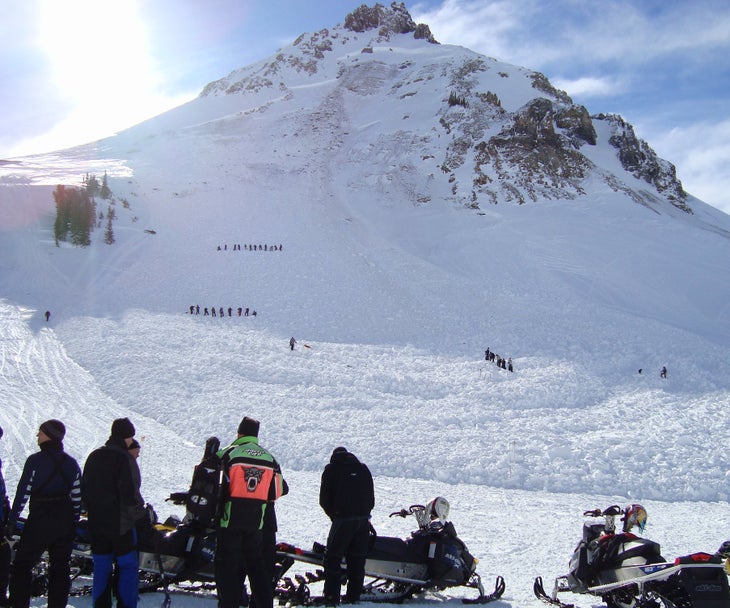
Avalanche professionals worry that the agency’s solution to the 2024 staff cuts are temporary, and that additional cuts are likely to occur in the coming years.
“If I’m being honest, I’m not confident that the Forest Service is going to figure this one out,” Black said. “If we’re going to chart a course for seasons to come, it makes sense to invite new groups to the table to fund these programs.”
Even Trautman, who worked long hours in September and October to save the seasonal employees, worries that the current solution may not last forever. “There are significant unknowns around how we accomplish mission-critical summer work, or if we can hire seasonal and turnover positions for next fall,” he said.
Different funding models do exist within America’s avalanche centers. In addition to the 14 Forest Service avalanche centers, eight regional centers are operated by separate non-profits. The Colorado Avalanche Information Center, the country’s largest avalanche program, receives most of its funding from the state’s Department of Natural Resources, with additional funds coming from private donations, local governments, and the federal government.
The other avalanche center managers who spoke to �����ԹϺ��� for this story said that the current crisis has made them consider—and even study—funding models that do not involve the Forest Service.
“If I’m being honest, I’m not confident that the Forest Service is going to figure this one out.”—Patrick Black, West Central Montana Avalanche Center
“There’s so much more the avalanche program could do if our current structure pointed us toward stability,” Schell said. “The amount of hours we spend worrying about funding alone could be put toward creating better forecasts.”
As Black and his board directors sought solutions to the West Central Montana Avalanche Center’s budget crisis, he crunched the numbers to see how it could exist without Forest Service funding or involvement. Like other avalanche centers WCMAC sells memberships to backcountry users that grant them access to events and teachings.
If half of the center’s 2,500 newsletter subscribers became paying members, the revenue would offset the lost Forest Service funds, Black said. Ramping up the center’s sponsorship sales could also boost its budget.
Black said that, if given more time for fundraising, the WCMAC could survive on its own.
“It feels like we’re a year ahead of the other centers in having these discussions,” Black said.
Consequences of Forging a New Path
Everyone interviewed for the story admitted that divorcing the 14 avalanche centers from the Forest Service would have consequences. The agency provides liability insurance and legal support to the centers, which help protect them from lawsuits.
“If someone tries to sue the Forest Service they’re not going to get very far,” Meadows said. “If they sued our foundation with our non-profit insurance, they’d kill us.”
Jayne Nolan, the executive director of the non-profit American Avalanche Association, an industry group for avalanche professionals, said that the Forest Service model provides greater stability for staff, like health insurance and paid vacation time. Nolan believes that the Forest Service has an obligation to continue managing the centers.
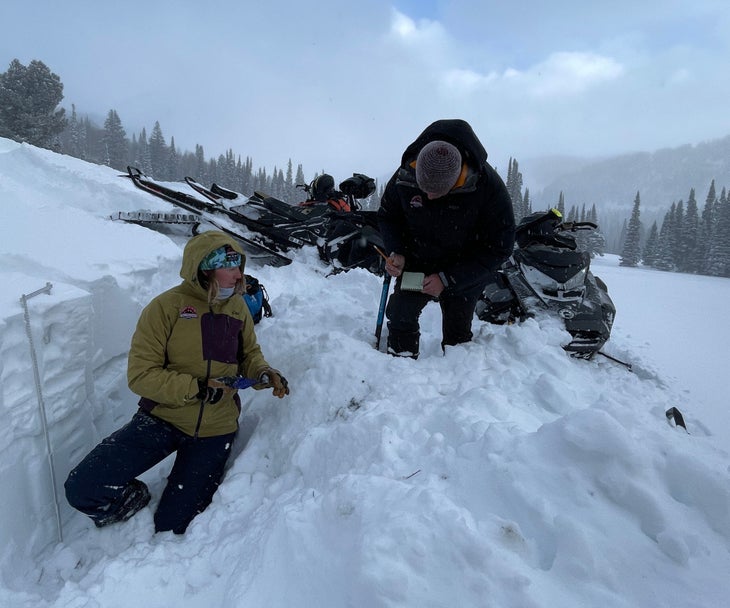
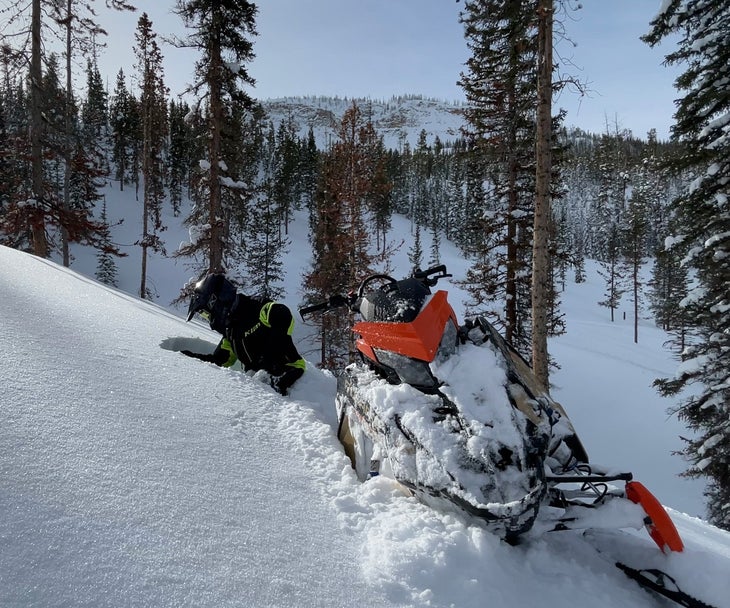
“Nearly 95 percent of all avalanche fatalities occur on Forest Service land,” Nolan said. “It’s the job of the Forest Service to reduce these numbers, even as backcountry skiing, snowboarding, and snowmobiling skyrockets.”
Bruce Tremper, who oversaw the Utah Avalanche Center from 1986 until his retirement in 2015 and wrote the seminal avalanche safety textbook, Staying Alive in Avalanche Terrain, says alignment with the Forest Service also gives avalanche centers clout with the general public. “If you’re part of the Forest Service then you have authority and legitimacy that people take seriously,” Tremper said. “It’s not just another non-profit springing up.” That authority makes backcountry users more inclined to pay attention to its warnings, he said.
Tremper said he endured multiple budget cuts, government shutdowns, and staffing shortages during his 29 years with the Utah Avalanche Center. Learning to exist amid the agency’s dysfunction is simply part of the job, he said.
“It took me a long time to figure out the rules and regulations of how to work in a government agency,” he said. “It’s like a big aircraft carrier and it’s hard to change direction when you’re in it.”
But Schell worries that this mindset has stifled innovation, and prevented avalanche centers from discovering better models for funding and management. The Northwest Avalanche Center will celebrate its 50th anniversary in 2025. And despite the center’s growth in fundraising and its advancements in snow science and avalanche prediction, the program is still vulnerable to shifts in the Forest Service’s budget and management structure.
“We’ve bootstrapped these centers for 40 or 50 years,” Schell said. “At what point can we have a durable and sustainable program?”
Schell told �����ԹϺ��� that the NWAC would continue to “lean into” the Forest Service relationship for 2025 and beyond. Rather than pursue non-profit status or state-run structure, he said the center would instead ask the agency to consider a different operational model for the centers. At the moment, all 14 avalanche centers exist within the Forest Service’s arcane management structure of regional forests and ranger districts. A center’s budget and staff size are decided by regional, and not national, managers.
“We need to find the right people inside the Forest Service to make the whole avalanche program stand on its own,” he said.
Black echoed Schell’s sentiment. In mid-December, the WCMAC began talks with the Forest Service for a smaller contract, one that included access to vehicles. But the uncertainty, Black said, still gave him considerable anxiety about the future.
“The whole thing frightens me,” he said.
Whether or not the lack of avalanche reports affects Seeley Lake’s snowmobilers this winter is yet to be seen. After a few early season storms in November, the lake saw sunshine in December, and the trails at lower elevations were mostly bare in the weeks before Christmas. But Zermeuhlen was confident that business would soon be booming.
“We’ll be inundated,” he said. “Hundreds of people heading out every weekend.”


